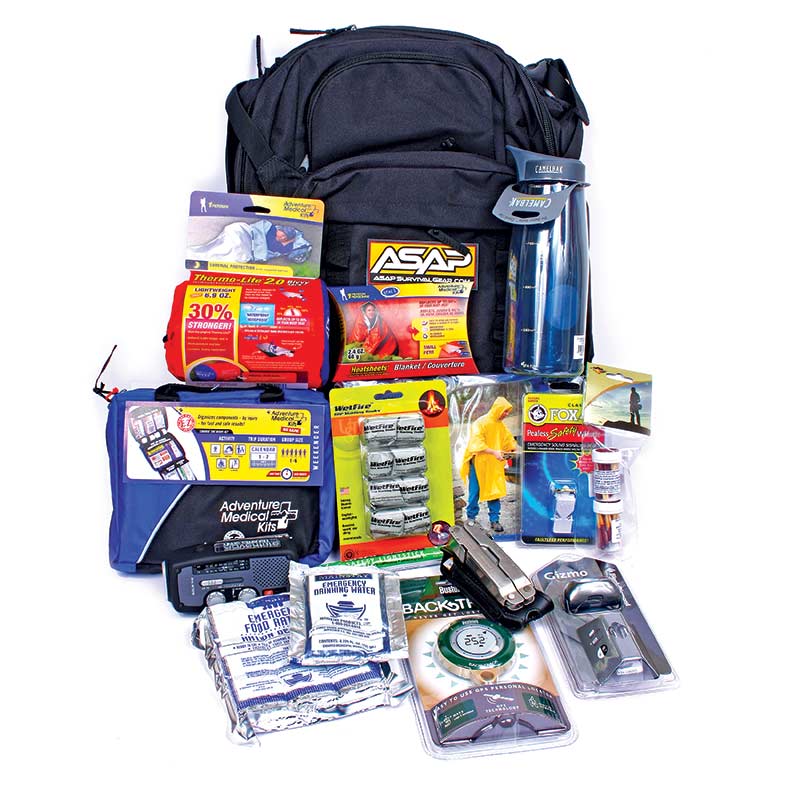Happy New Year!
Now Survive It
It seems I kicked over an anthill with those “Doomsday Gun” comments in a previous Gun-crank scrawl. It started rollin’ with readers, gunwriters, editors and industry folks volleying back and forth about doomsday guns; what designs, features and finishes might be most survivable in end-game scenarios, sans support, supplies and societal stability. Then all that stuff spun up and out, expanding into post-catastrophe then post-apocalyptic sur-vival in general, before circlin’ back and down — right on my gourd. “Talk about it,” sez His Editoriship …
I’m not styling myself as an expert on survival. I’ve advised and consulted on “critical preparedness planning,” and I have, well … survived. But I’m just a guy who knows some stuff — like these three things:
First, 90 percent of you live in places subject to one or more of these predictable forces: earthquakes, flooding, tornadoes or hurricanes; metro, forest or wildfires, and severe snow, ice or lightning storms. Most of you live on grids which may at any time suffer massive system failures. And finally, there is no sizeable city in the US which is more than one week away from empty shelves, widespread riots and looting, and martial law or anarchy. Industrialized society at its best and worst exists only in a precarious balance.
Many feel there is greater potential today than at any other time in our history for the shiny coin to jiggle outta the slot. Such scenarios are kinda like God or jihad — whether you believe in ’em or not makes no difference; they believe in you, and they’ll come for you sooner or later.
Second, “Are you prepared?” ain’t a question, it’s a koan; an interrogative not intended to elicit an immediate answer, but to stimulate thought on the complex, multi-faceted factors involved. If somebody just blurts “Yes,” they’re not — count on it.
Third, the road to survival prep ain’t a road; it’s a network of shifting, changing trails, with crossing points at places like “Prolonged Power Outage” and “After the Earthquake” to “The New Stone Age.” The network has no terminus; it just keeps going and evolving. Trouble is, most people who even attempt survival prep start from the wrong points.
Start At Marker Zero
I’ve done both formal and informal advising, and found examples like this: In a big South American city, an affl uent family of three had a remote “safe haven” prepped and waiting, and a 4WD vehicle stuffed with supplies in their garage. When riots and gun-fire broke out, it was so sudden and fi erce in their upscale shops-and-townhouses area — a natural looter-magnet — they literally couldn’t get down the sole-access exterior stairs to their street-level garage. It would have cost their lives. The entire side was pocked with bullet holes, violent feral looters roamed free, and a neighbor lay dead on the landing.
They were totally unprepared to just hunker down inside their home for four days. They were weak, nerve-shattered, dehydrated and debilitated when the national police fi nally restored order. Their $50,000-plus Gelandewagen was defunct anyway, having taken a round through the fuel pump. They started their “preparedness journey” at about mile-marker 80 and were unprepared for marker number one.
A guy boasted to me he had a 70-gallon water heater installed and could use it as an emergency water source. I asked if he knew where the drain tap was, and did he have a wrench handy to fi t it? Nope. It turned out to be so jammed in its space he would have had to dismount it to get a drop. I asked another guy, proud of his preps, “You wear contact lenses, right? Got spares? Got spectacles for backup?” He explained he used disposables, was down to his last set, his glasses broke and he hadn’t replaced them yet … but he had lots of freeze-dried food an’ camping gear! Folks like him are called “supply centers” by survivors.
I knew two middle-aged brothers who had stored food, water and meds, plus many guns and thousands of rounds of ammo. Their door was up-armored and their street-side windows were inch-thick plexi. They lived in a huge old wooden multi-unit building with lofts — a torch ready to be lit. “In case of fire,” I asked, “And you have to walk out, what will you take and where might you go?” The AC hummed and rattled, as did they …
From The Inside Out
Preparing to survive almost any exigency should work from the inside out. That means start inside your own body — and those of others you’re responsible for — allowing for basic and crisis-mode needs for 48 hours, inside your own dwelling, without utilities or services, period! If that seems too simple, you’re not being thorough enough. Aside from high-energy food, water, meds, com-munication, sanitation, protection et-al, consider things like, if condi-tions dictate you emit no light or sound indicating people inside, are you prepared for that?
It’s a koan, folks. Start at marker one. And remember my Grandpa Connor’s advice: You gotta have what you need, or have what it takes to get what you need. Connor OUT






